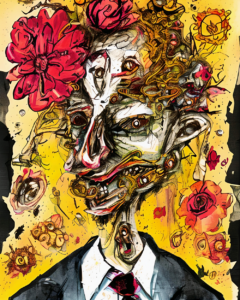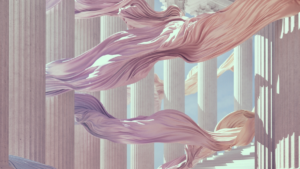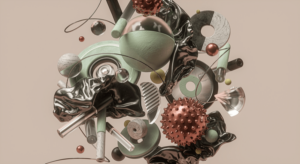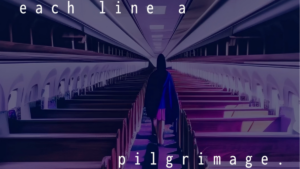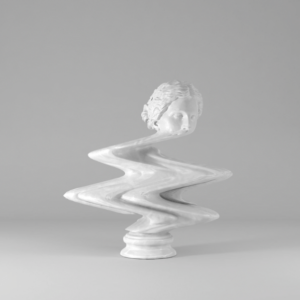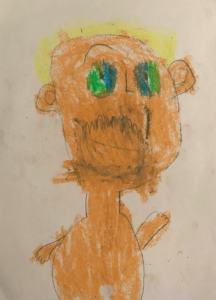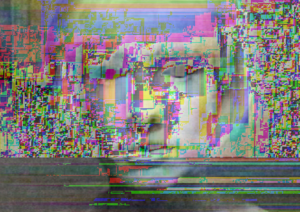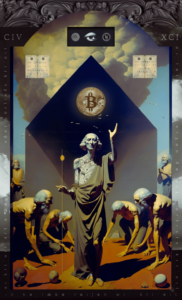SmogOne, born in France and raised in Paris, developed a passion for drawing from an early age. He moved to Florida in the 1980s, where he was introduced to Hip Hop culture and discovered graffiti. Over time, SmogOne developed a unique 3D style of lettering and characters and has been an integral part of multiple crews, including XMEN Crew, FX Crew, BSK Crew (Miami), and CEO Crew. He began painting on canvas in the mid-90s and has continued to refine his style over the years. Today, he primarily focuses on painting murals and canvases and resides in Florida.
Please enjoy our interview with SmogOne
Watch/Listen to the Interview
The Unconventional Journey of Graffiti Artist, SmogOne
BW: So you’re a graffiti artist. Some of our audience may be familiar with you and your work, but others might not. Perhaps you could introduce yourself to those who aren’t familiar?
SO: My name is SmogOne. I’m a graffiti artist originally from Paris, but I’ve been painting in Florida for the past 25 years.
BW: I’m curious about your creative process. From your process videos, it seems like you just execute without an outline. Could you walk me through your steps, from the seed of an idea to the finished product?
SO: I don’t use outlines because when I first started graffiti, I lost my outline during a group project. This forced me to freestyle directly on the wall. It didn’t turn out as I wanted, and I vowed never to rely on an outline again. Now, I primarily freestyle.
An idea usually pops into my head and I visually see it. I quickly sketch this vision to capture its shape and feeling. For detailed elements, like characters with glasses, I use real references. I own a pair of Cazal glasses, which I wear and photograph from the character’s perspective. This way, I can see the exact way the glasses sit.
Once I have a reference, I sketch it in a graffiti style, modifying elements to my liking. This might involve extending the glasses or simplifying the design. If I’m doing a larger, more detailed canvas, I work from this reference. When I’m working on a wall, I take inspiration from the image but do not copy it exactly. I’ll study it briefly then freestyle on the wall.
As for letters, I also freestyle those on the wall without an outline. Outlining on paper is useless because reproducing that exact outline on the wall is almost impossible without a grid. I prefer to freestyle because it usually comes out perfect the first time. Plus, with graffiti, you can always go over and modify anything as you go, so there’s no commitment to a particular outline. This approach makes the process more fun and engaging.
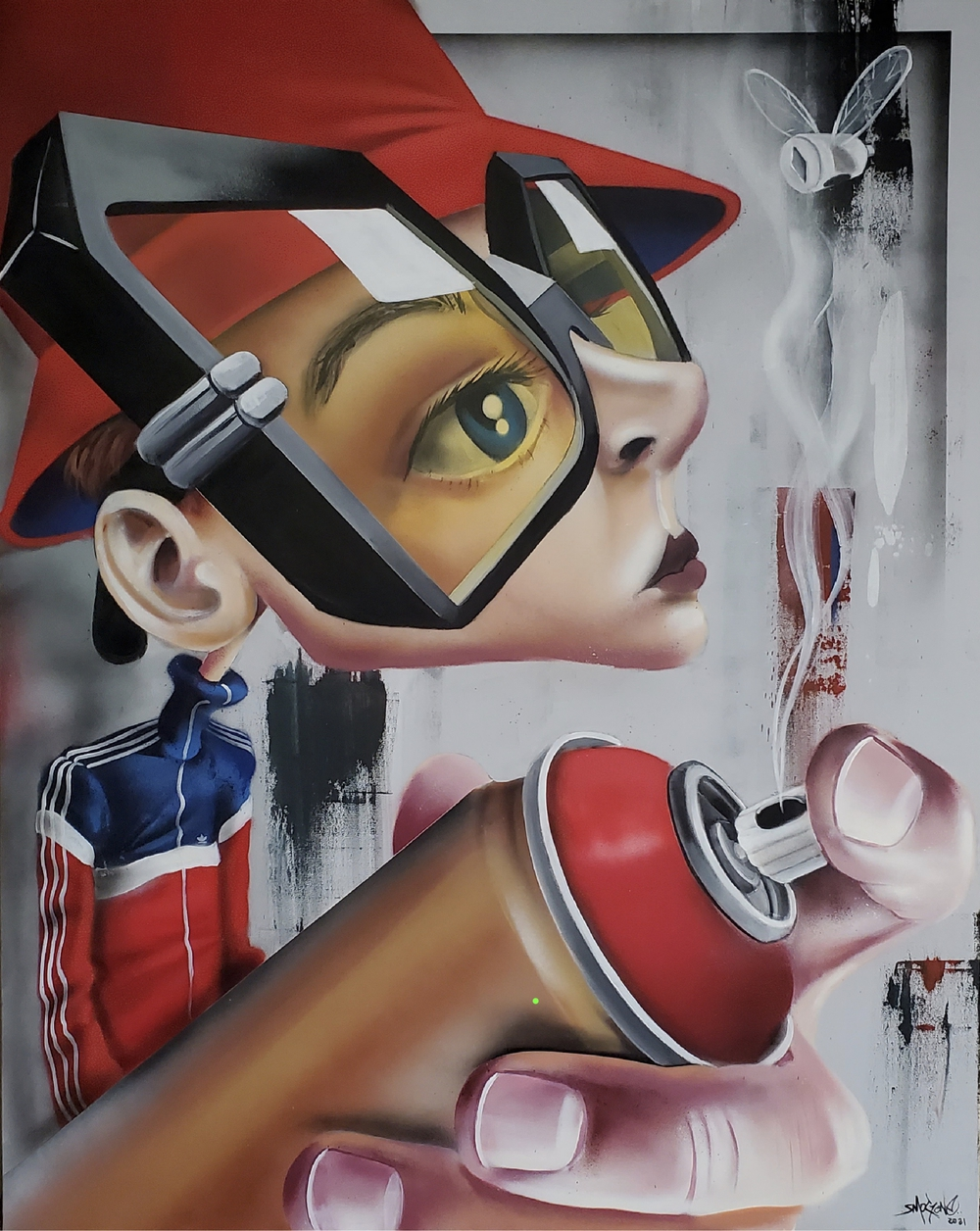
Translating Skills from Paper to Wall
BW: What was your process for transitioning from being someone who couldn’t freestyle to being someone who could?
SO: Practice is key. I filled countless black books with outlines, drawing in one every day. That’s been my routine for years, and these books, stacked up with start and end dates, are filled with outlines, color, characters.
Over time, you find certain elements you love to replicate because they just look good. For instance, you might develop a particular style for drawing your ‘M’ that you find pleasing. You don’t use it every time, but it’s a technique you might return to. Building a repertoire of these little tricks comes from practice, like anything else. Whether you want to excel at the violin or basketball, you have to put in the work.
BW: Are there any specific tips for practicing? Is there a better or worse way to practice?
SO: There’s no bad way to practice as long as you’re exercising your creativity. As you practice, you develop. Sometimes, you might even make a mistake that propels you to a new level. You’ll stumble upon an unexpected effect, think, ‘nobody’s done this before,’ and run with it.
BW: Does practicing on paper translate to working on a large scale, like a wall or a canvas?
SO: Practice on paper can help you learn how to draw something, such as faces, so you’ll know how to replicate that on a wall. But working on a large scale is a completely different experience. When drawing on paper, it’s like standing far away from a wall and having a long arm to draw from that distance. On a wall, however, it’s like your face is right up against the paper.
You can only work on a small part at a time, and you need to step back frequently to see the whole picture. That’s because graffiti is meant to be viewed from a distance. Therefore, you have to regularly step back to assess the overall effect.
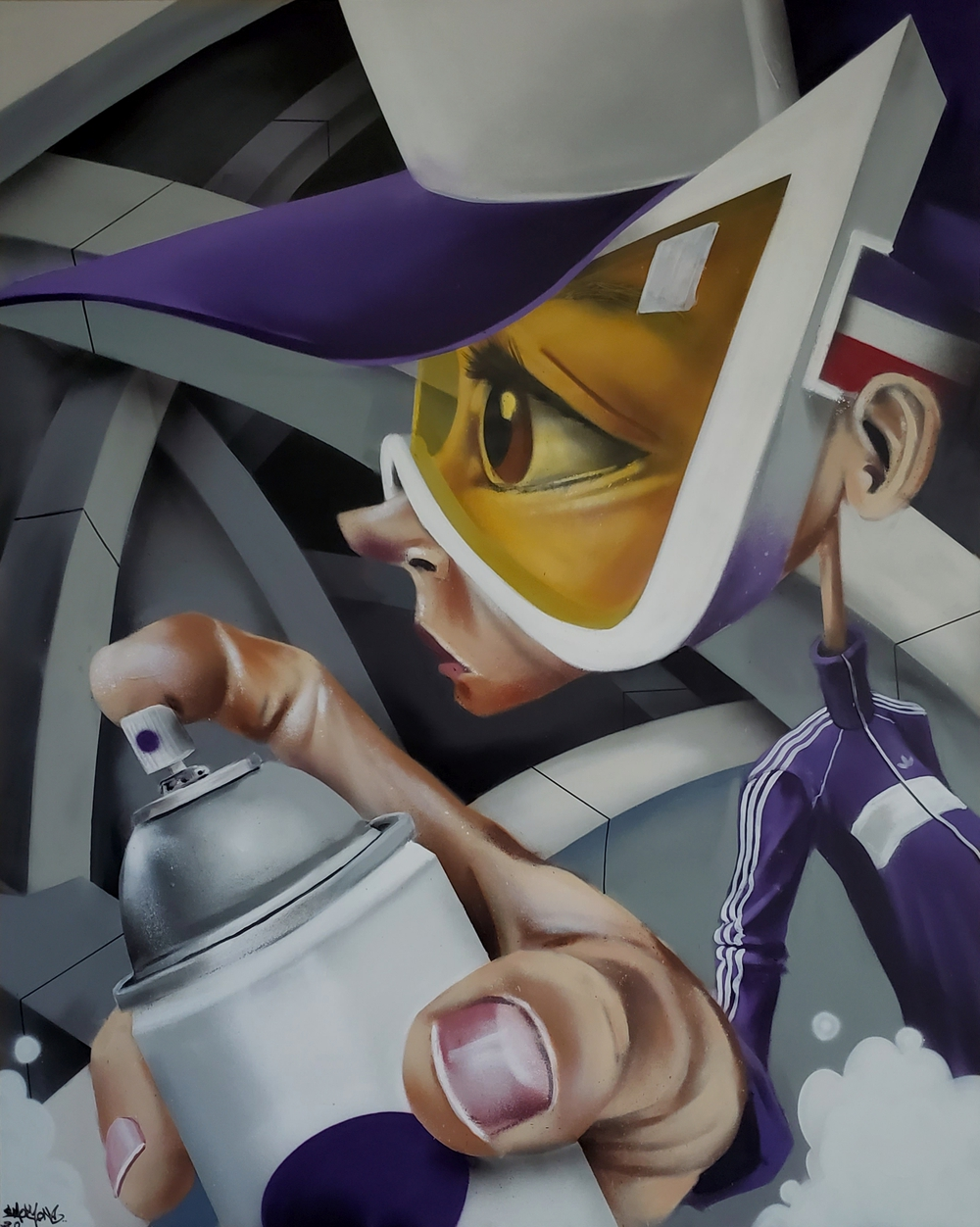
BW: How do you develop that skill?
SO: Well, it involves drawing as you normally would, but it’s crucial to constantly step back from the wall to check your proportions. It’s easy to think something is the right size up close, only to step back and realize it’s too large or small. So, essentially, every five minutes, I’m moving away from the wall to view it from a distance before returning to it.
If you’re fortunate enough to work on a wall where you can step 20 feet back, that’s great. But sometimes, you’re in tight spots where you can’t move back much. In these cases, you make do with what you have, and the result is what it is. After all, viewers can only see it from as far away as you can step back, and their photographs will be from the same distance, so it still works out.
BW: Do you distinguish between ideas for canvas paintings and mural designs?
SO: Any idea can be adapted for either a painting or a wall. I’ve done brush paintings based on murals and vice versa. The medium doesn’t restrict the idea. The key difference lies in the level of detail you can achieve with spray paint. If you’re working on a large scale, say 20 feet by a hundred feet, you can incorporate as much detail as you would on a canvas. But if you’re working on a smaller 10-foot by 8-foot wall, you need to simplify. The same idea can take two forms – one simple, the other complex. It’s about choosing which form suits your present circumstances.
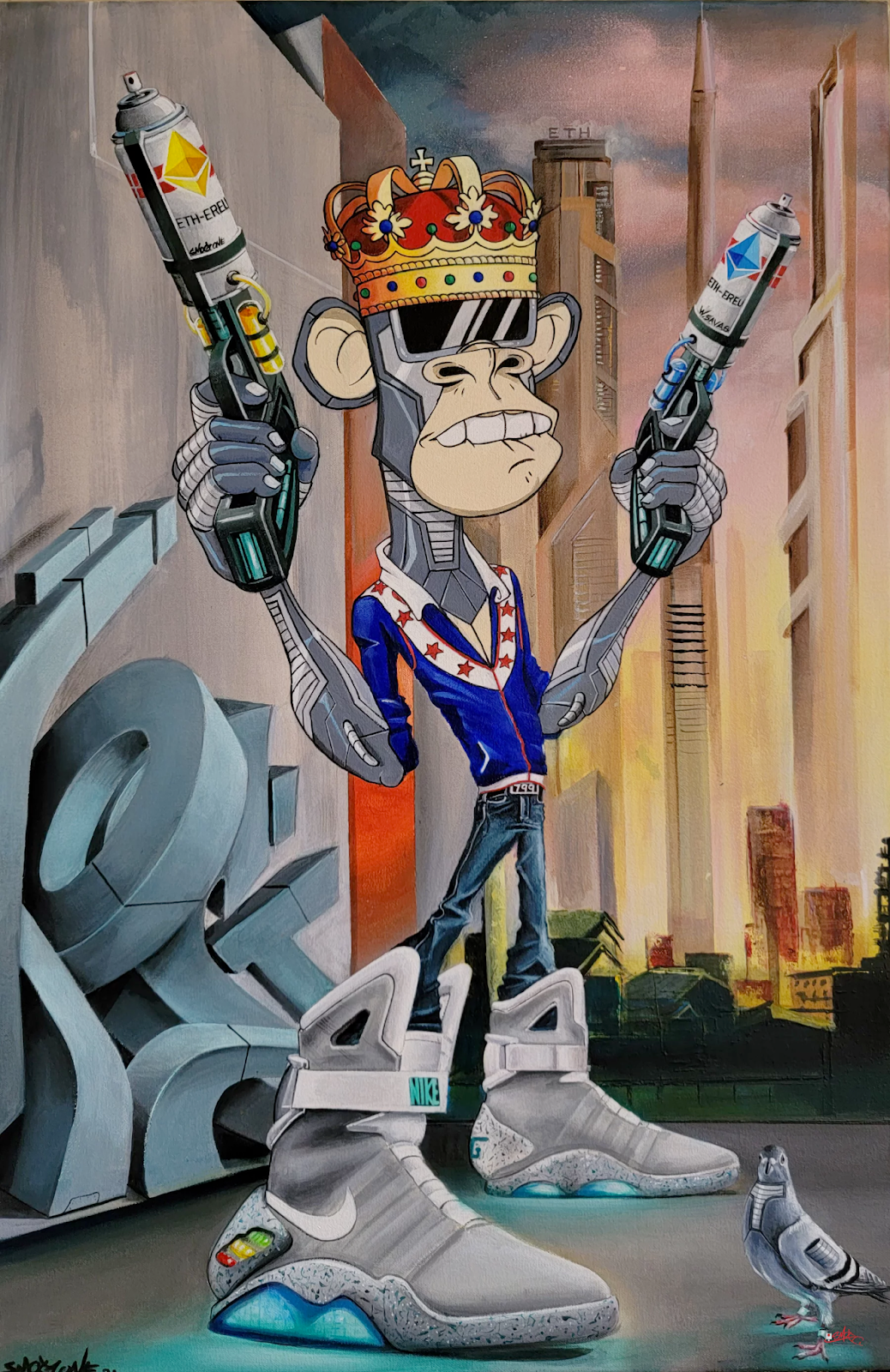
BORED APE #799 X SMOG ONE by SmogOne
The Evolution of Style: Between Repetition and Innovation
BW: You have an incredibly distinct style. How do you keep things fresh while maintaining your signature?
SO: It’s a challenge. Like any creative endeavor, there’s a limit to repetition. Just as with TV comedies or music genres, you need to introduce something new and distinct.
BW: So how do you keep things fresh and maintain your voice?
SO: It’s all about generating ideas and not being afraid to experiment. For instance, I introduced the concept of spray paint caps with wings, my “fly caps”. Now they’re a new signature element. I’ve always used sneakers in my work because I love them. I’ve moved from Jordans to old school Adidas to Yeezys, each choice reflecting something new. It’s important to integrate what you’re passionate about into your work.
Recently, I’ve started incorporating elements like vintage cars into my art. So, for example, a character set in the ’80s might have a Lamborghini Countach in the background. It’s a throwback that car lovers can relate to. Now, alongside my old-school radio and sneakers, I’ve opened up a connection with car enthusiasts.
The key to staying fresh is introducing new ideas that stem from your personal passions. That passion will shine through and ensure the success of your work.
BW: Does the recurring character in your work have a name?
SO: No, he doesn’t have a name. The character is essentially a European graffiti artist, much like myself, who moved to America. Even though I don’t intentionally draw him to look like me, many say he does. What’s unique about my characters is the constant presence of a pigeon, which acts as the character’s spirit animal or buddy. The pigeon watches over him while he does his graffiti, alerting him if trouble is coming. This pigeon doesn’t accompany other subjects of my art, like Jay-Z for instance. It’s only associated with my personal characters, this graffiti artist journeying through time with his pigeon companion.
Drawing was a significant part of my youth when I moved to America, and characters have always been an integral part of graffiti. A fellow artist, Clear One, who was a master at characters, had a considerable influence on me, as did Mode 2. I came across Mode 2’s work in a book titled “Spray Can Art.” His characters, much like those of The Chrome Angels in New York, were astounding and inspired me to delve deeper into character creation.
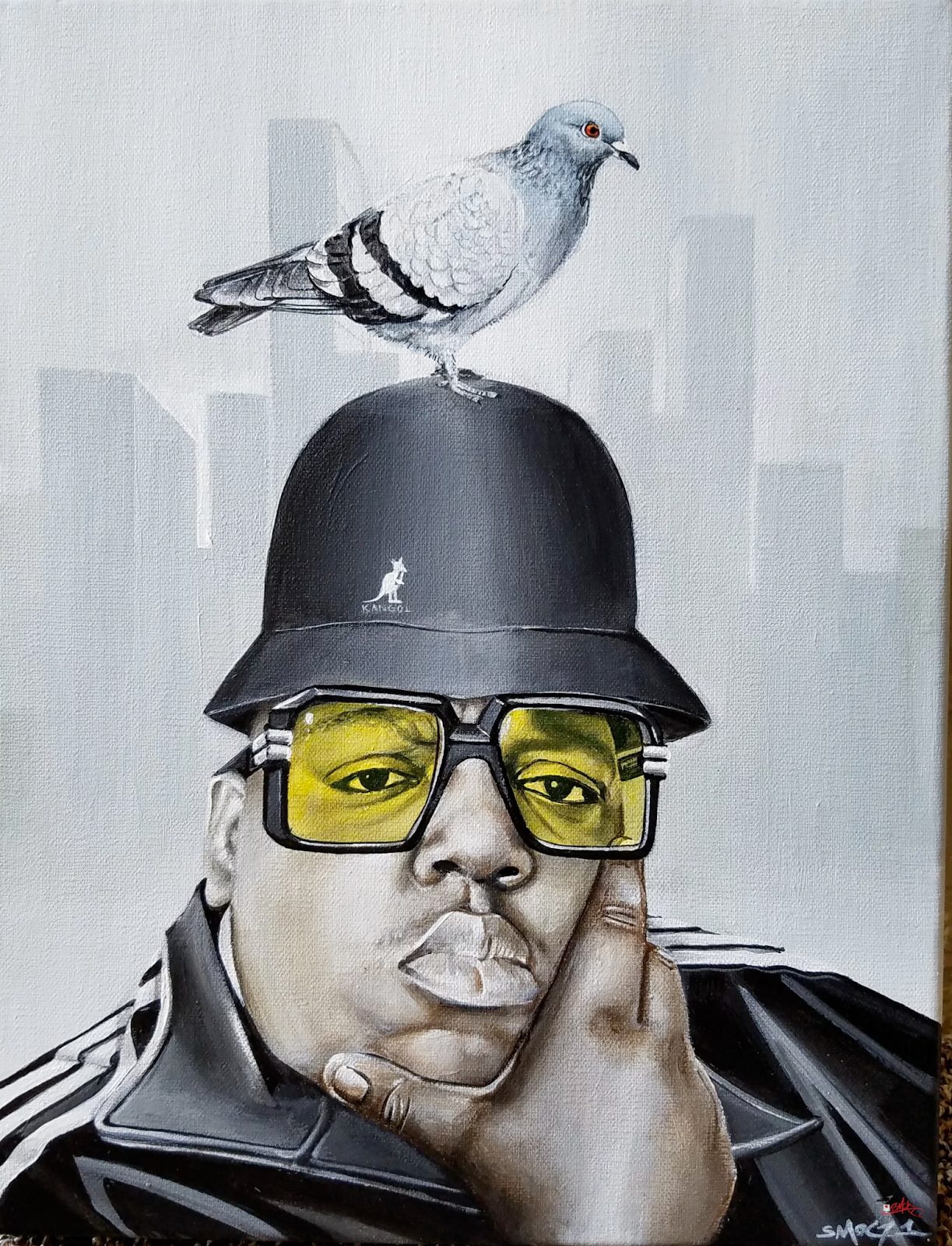
WHERE’S BROOKLYN AT by SmogOne
BW: In your early stages, were there many characters that didn’t make it past the drawing board?
SO: Not discarded, but rather evolved. I have countless characters in my black books. When I understood the importance of having a signature as an artist, I realized that I needed a consistent element across my work. It’s crucial for people to recognize your art piece by piece. So, it’s not about leaving characters behind; it’s about the constant evolution to define my artistic identity.
BW: This leads to a good question: when you have the ability and interest in so many styles, how did you find the ‘you’ in the style?
SO: I turned to my black books and asked, what do I keep repeating? I found it was the B-boy characters. After sharing a B-boy character on Facebook and receiving an overwhelming response, I knew I’d found it. So, I expanded on that theme with more characters, settings in New York, old school elements like ghetto blasters and break dancing. It just clicked. Young people remember that era, older people lived it, and it was well-received, so I stuck with it.
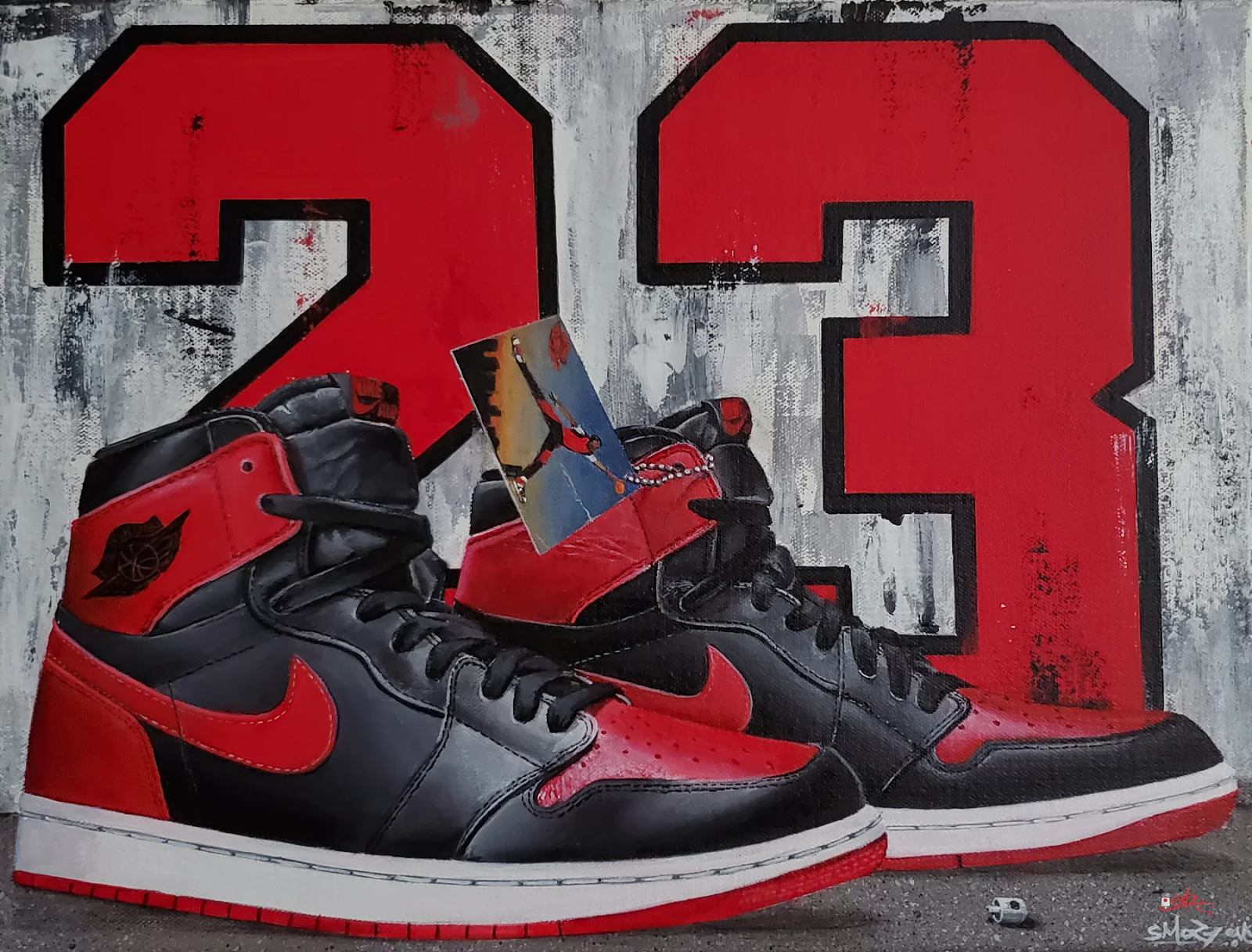
BANNED 5000 by SmogOne
The Art of 3D Graffiti
BW: Your initial lettering style was heavily influenced by Erni Vales, who, from what I can tell, really invented that 3D style.
SO: Yeah, the funny part is, I only have two pictures on my shelf: a picture of my parents and a picture of me in front of Erni’s piece in Queens. I was lucky enough to go to New York, but lost every single picture I took when my plane got delayed at LaGuardia. We went back to Queens, bought a little camera, and I took those pictures. They’re the only pictures I have from my trip to New York and sure enough, there’s the Erni piece.
Once I saw the 3D because my head is very dimensional and mathematical, I loved the challenge of the 3Dness. I started doing 3D, and then of course, I saw works by Hessian Dime. Many 3D artists came out after that. For example, Lumet, who I met and was super nice to me at Banzel.
Artists like Dime and PETA inspire me to do 3D so much. Once I saw their stuff, I knew 3D was my thing. I just freestyled it, learning the color ways and the lights and the shadows. The precision required is challenging, but these guys are like the masters. They’re so precise at it.
BW: You’ve also created sculptures, which seems unique for graffiti artists.
SO: That derives from Dime. I saw him making sculptures and thought: making a three-dimensional object, putting a light source on it, and taking a photograph of it gives you exactly what you want. So, I started cutting paper and building this whole three-dimensional piece.
Creating it in 3D gives you the true, true dimensional quality, kind of like when people take pictures of photographs of people, that’s how they get all the perfect shadowing and reflections. For 3D graffiti, if you build it and then take a photograph of it, it’s on another level. Your brain has to be thinking three-dimensionally both ways. It’s hard when I start to try to explain that because I visualize things as if they’re literally sitting in front of me.
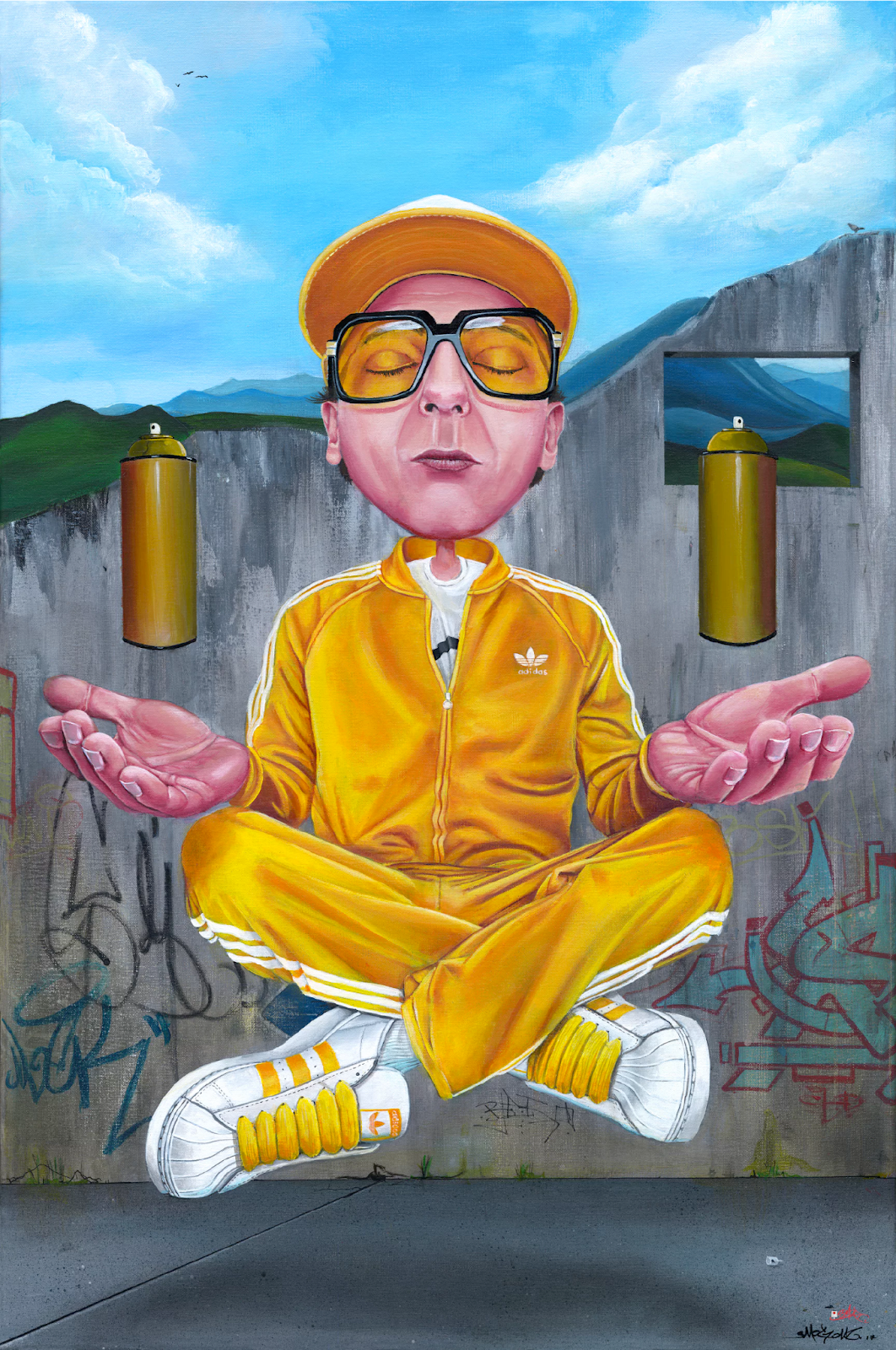
ZEN by SmogOne
BW: Have you used any 3D software at all to try to iterate on these ideas?
SO: No, I just started using Procreate. My first piece was a 3D piece. Now, it has almost 6,000 views on YouTube. As for 3D software, no clue. I’ve watched PETA use software like Rhino, but it seems too complex for me. I’d rather just do it in my head. It’s simpler than using a 3D program. Maybe when I have time, I will use a 3D program, but I don’t have the time to learn it now.
BW: You could use something like Rhino and actually do the sculptures with a 3D printer or some sort of fabrication place.
SO: I see that, but there’s no way that I’m putting the proper shadows and proper lights on everything. I’m halfway guessing. When a piece gets complex, to be able to just do that perfectly off your brain is really hard. I’m sure if I thought something was perfect and put it into that program, it would look even way more 3D, like it’s floating in your hand. But I just gotta keep practicing. I don’t do as much 3D anymore because I’m doing so many characters and trying to develop so much other stuff.
Joining the Graffiti Crews: X-Men and FX Crew
BW: Are you currently part of any graffiti crews? I understand you were part of the X-Men crew and Blessed Style Kings.
SO: Yes, I started with FS, the Flavor Savers, and I’m still with them. Then, Flavor Savers and some other Miami crews came together to form BSK. BSK has now spread out, with members living in different states. I’m not sure who from BSK is still here in Miami. Most have moved to places like Atlanta. Then I joined the X-Men Crew and FX Crew, which was my latest addition.
Watching Hesh, Dime, and their 3D art in FX Crew, I remember thinking how great it would be to join them. It seemed like such an unattainable goal, but I made it, which still astounds me. When Per invited me to join, I couldn’t believe it. It’s a testament to the idea that if you want something bad enough and put in the work, you can achieve it. A special shoutout to Per, rest in peace. I’m truly honored to be a part of all these crews, including X-Men and FX.
BW: Could you explain what it means to be in a crew?
SO: Being in a crew is about constant communication and mutual support. Unfortunately, I joined FX quite late. If I had joined earlier, I could have traveled to New York, LA, and other places to work on walls. I’ve missed out on some walls recently that I wish I could’ve contributed to, like the FX anniversary wall in New York and a large project in LA with Hex.
However, when you can be present, it’s fantastic. Everyone flies in, we get together and paint. It’s a lot of fun. Life happens and sometimes you can’t be everywhere you’d like to, but that’s just how it goes.
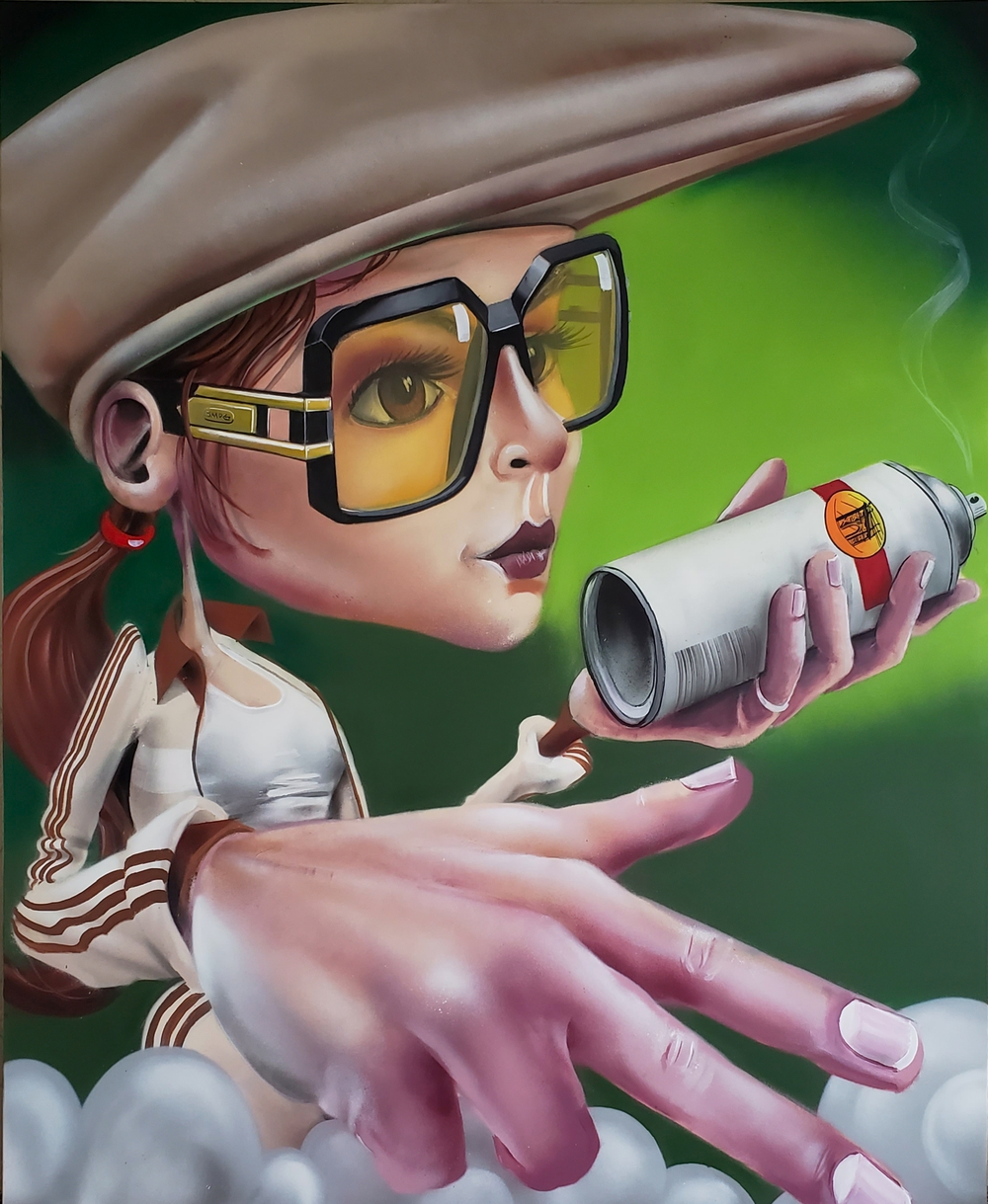
BW: I’m curious about the intersection of hip-hop culture, graffiti, and French culture. Do you maintain a connection with your French heritage?
SO: Graffiti was always present in France when I was there, but it wasn’t my main focus until I moved to the US in the ’80s and met B-boys who introduced me to breakdancing and graffiti. Regarding my French roots, I haven’t been back since the ’80s. I prefer to remember France the way it was when I left. Although I’ve heard that Paris is still a beautiful city, I fear it won’t match my memories. Despite this, I’m always proud to say I’m from Paris, I’m French. Maybe one day, I’ll overcome this fear and visit.
BW: What about your connection to South Florida?
SO: I’ve been living in South Florida since the eighties.
BW: You’ve lived in South Florida since the ’80s. I assume you’ve had opportunities to leave, but you stay. I’m interested in knowing what culturally bonds you to South Florida.
SO: One thing is that I can’t stand the cold. I’m skinny with no fat to insulate me. I once moved to Minnesota to clear my head and start from zero. Growing up in Florida is like being at a nonstop party. The weather is always hot, there’s never snow, the clubs are incredible, and you’re constantly meeting fascinating people. But you can’t be part of the party all the time; at some point, you need to focus on starting a business or considering a mortgage.
So I moved away from Florida to escape the partying and get serious. But then winter was about to hit Minnesota, and I decided that I couldn’t endure the cold. The stories I heard about Minnesota’s winter were daunting. However, when I came back to Florida, I was a different person.
I used to party nonstop, had barely any money, drove a car my parents got for me. I had to grow up fast when I moved to Minnesota. The day I arrived, I woke up in the afternoon and told my parents I was going job hunting. I ended up getting a job at a club and helped them move equipment for their new bar. They offered me the bar because I was the only one willing to help. The guy I assisted also needed help during the day, so I ended up with two jobs – moving bar stuff during the day and working as a bar back at night.
In less than 24 hours of moving to Minnesota, I’d transformed from someone with no responsibilities to a person with two jobs. From then on, I’ve always worked hard, never without a car or being broke again. Florida is a party, but you sometimes need to step away, reset, and then come back to conquer.
BW: You’ve been at this for a very long time. What inspires you daily? Is it the development of your style or the flow of new ideas? What motivates you to paint every morning?
SO: The ideas definitely motivate me. As soon as I finish one painting, I come up with ten more ideas. It could be something like a neon mug painting. I visualize a whole painting in my head, note down the details, and then I can’t wait to bring it to life. If you don’t have passion for something, you won’t have the drive to do it. That’s why they say, if you want to excel in life, find what you’re passionate about.
But it’s not all rosy. People say if you love what you do, you’ll never work a day in your life. That’s partially true, but not entirely. You’ll actually be working harder, nonstop, every day, especially if it’s your own thing. As an artist, not only do you have to produce art, but you also need to promote it on social media, do interviews, collaborate with others, and sell your work.
Once you’re past just painting canvases and start giving interviews and appearing in magazines, it becomes even more exciting. The other side of the coin is, of course, money. I’d rather earn $10,000 by selling a canvas than working for someone else and making them that amount.
Not that I haven’t worked regular jobs. I’ve been employed at places like Gap when I was young. You have to start somewhere, learn the workforce dynamics, and understand what it means to save money. Passion is crucial because initially, you’ll be working hard on something that may not be bringing in money.
For instance, when I was tattooing, I would work until 10 PM, then go home and work on my X-Men pieces. Each morning a new piece would pop up, and people would wonder when I found the time to do it. Similarly, while I was working as a bartender, I was also apprenticing in tattooing for twelve hours a day, not getting paid for half the work. But that’s the kind of commitment and passion you need. It’s crucial to maintain a job while you work on your passion until you can finally switch careers. So, yes, passion and work, they’re inseparable.
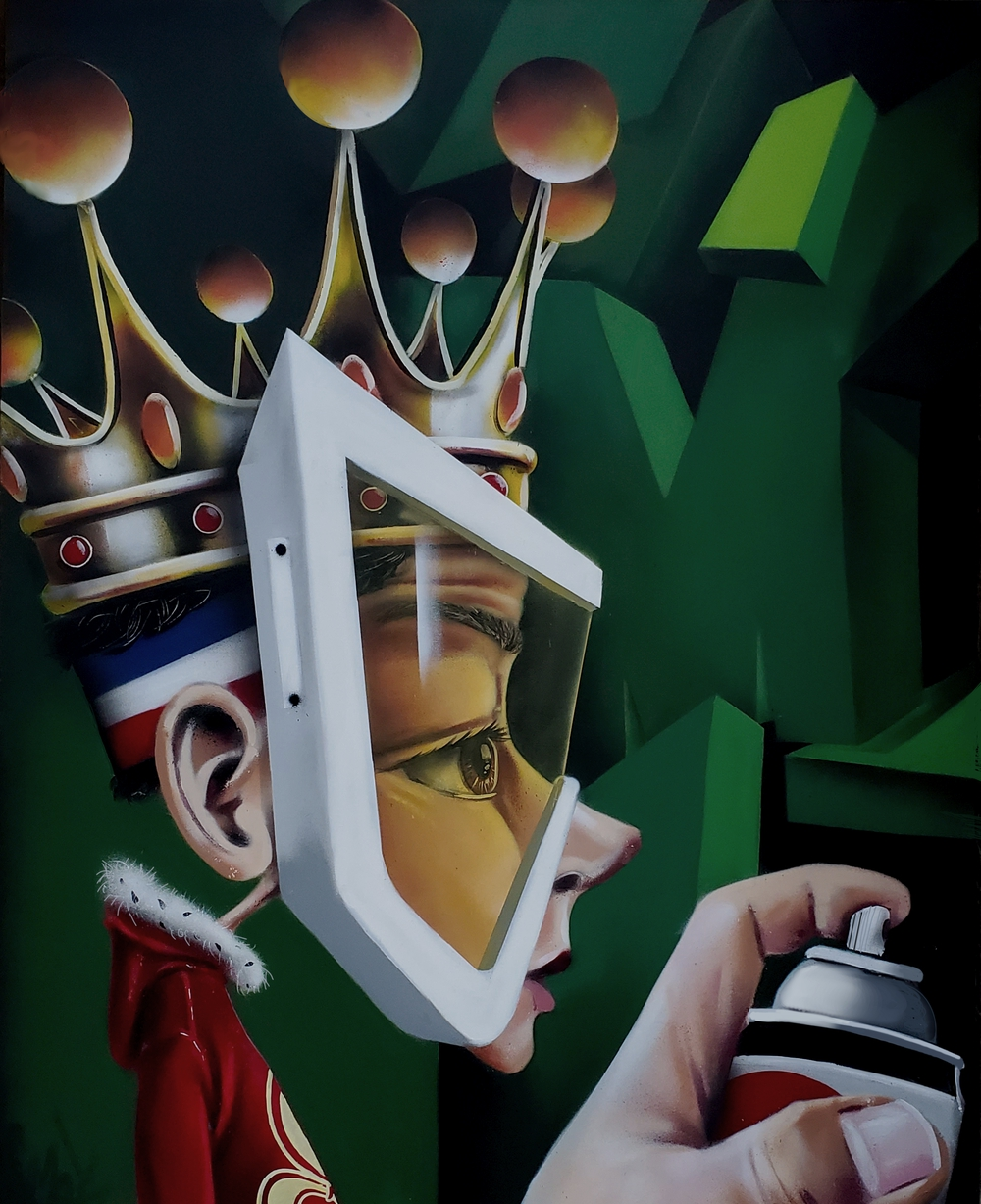
Never Give Up
BW: Is there a creative process behind building a career? I mean, beyond the brute force required. Are there creative elements in career building, marketing, promotion, that you take creative pleasure in?
SO: Absolutely, the results. When you get the momentum going, people start noticing your work, it feels good. Whether you’re getting credit or you post something and see 2,000 likes on Instagram, you know you’re building your brand. You do it for the results, right? It’s like building a house. You don’t do it just to build, but to see the beautiful house you’ve put all your passion into. The result is what it’s all about.
BW: That makes a lot of sense. We’re nearing the end here, and I always like to finish my interviews with this question: what advice would you give your 20-year-old self about art, creativity, the creative process, or any mindset you wish you’d had?
SO: Certainly. There was a point when I felt I had to abandon what I loved to get a job. I began prioritizing making money over my artwork. I was working, I had money. I could do whatever I wanted, and it felt good. But, later on, I found myself behind the bar, realizing I should have been doing artwork this entire time. Right when graffiti artists were gaining recognition and entering galleries, I faded out. I only realized it when a customer at the bar told me, if they had my talent, they’d be a millionaire. That’s when I decided to leave the bar business and start working with art. That’s when I started tattooing, working long hours, and committing to no days off.
I could have been so much further along if I hadn’t given up art for money. I’d probably be better, more well-known. So, I would say: never give up. Even when you have to start making money and your art becomes a side hustle, don’t abandon it. Because you never know when what you’re doing might blow up, and you don’t want to miss it. It took me ten years of tattooing before I realized it wasn’t what I wanted to do for the rest of my life. I quit and started painting, enduring financial hardship for years. But at the end of the day, I didn’t give up my dream. Always leave room for your passion, no matter what else you have to do.
For updates on all of our artist spotlights, subscribe to our newsletter below.
- SEO Powered Content & PR Distribution. Get Amplified Today.
- PlatoData.Network Vertical Generative Ai. Empower Yourself. Access Here.
- PlatoAiStream. Web3 Intelligence. Knowledge Amplified. Access Here.
- PlatoESG. Automotive / EVs, Carbon, CleanTech, Energy, Environment, Solar, Waste Management. Access Here.
- BlockOffsets. Modernizing Environmental Offset Ownership. Access Here.
- Source: https://rare.makersplace.com/2023/07/10/working-without-outlines-building-a-relentless-work-ethic-and-keeping-graffiti-og-interview-with-smogone/?utm_source=rss&utm_medium=rss&utm_campaign=working-without-outlines-building-a-relentless-work-ethic-and-keeping-graffiti-og-interview-with-smogone
- :has
- :is
- :not
- :where
- $UP
- 000
- 1
- 10
- 20
- 24
- 25
- 3d
- 5000
- 9
- a
- ability
- Able
- About
- absolutely
- accompany
- Achieve
- across
- acts
- actually
- adapted
- addition
- Adidas
- advice
- afraid
- After
- again
- against
- age
- All
- along
- alongside
- also
- Although
- always
- america
- amount
- an
- and
- angels
- animal
- Anniversary
- Another
- any
- anymore
- anything
- APE
- approach
- ARE
- ARM
- Art
- art piece
- artist
- artistic
- Artists
- artwork
- AS
- assess
- associated
- assume
- At
- Atlanta
- audience
- away
- back
- background
- Bad
- bar
- based
- Basketball
- BE
- beautiful
- because
- becomes
- been
- before
- began
- behind
- being
- believe
- below
- Better
- between
- Beyond
- Black
- blessed
- blockchain
- blow
- board
- Bonds
- book
- Books
- born
- both
- bought
- Brain
- brand
- Break
- briefly
- bring
- Bringing
- Broke
- Brooklyn
- brute force
- build
- Building
- business
- but
- by
- came
- camera
- CAN
- canvas
- caps
- capture
- car
- Career
- careers
- cars
- cases
- ceo
- certain
- challenge
- challenging
- character
- characters
- check
- choice
- choosing
- Chrome
- circumstances
- City
- clear
- Close
- club
- clubs
- Coin
- cold
- collaborate
- color
- come
- comes
- coming
- commitment
- committing
- Communication
- companion
- completely
- complex
- concept
- connection
- considerable
- considering
- consistent
- constant
- constantly
- content
- continued
- contributed
- could
- course
- created
- creation
- Creative
- creativity
- credit
- crucial
- culturally
- Culture
- curious
- Currently
- customer
- cutting
- daily
- Dancing
- Dates
- day
- Days
- decided
- deeper
- definitely
- Delayed
- Design
- designs
- Despite
- detail
- detailed
- details
- develop
- developed
- Development
- DID
- difference
- different
- directly
- discovered
- distance
- distinct
- distinguish
- do
- does
- Doesn’t
- doing
- done
- Dont
- down
- draw
- drawing
- dream
- drive
- during
- dynamics
- each
- Earlier
- Early
- earn
- easy
- Editorial
- effect
- either
- element
- elements
- else
- embedded
- employed
- end
- endeavor
- enduring
- engaging
- enjoy
- enough
- ensure
- entering
- enthusiasts
- Entire
- entirely
- equipment
- Era
- escape
- especially
- essentially
- Ethic
- European
- Even
- Every
- every day
- everyone
- everything
- evolution
- evolved
- exactly
- example
- Excel
- exciting
- execute
- expanded
- experience
- experiment
- Explain
- extending
- Face
- faces
- familiar
- fantastic
- far
- fascinating
- FAST
- Fat
- fear
- Feet
- fellow
- filled
- Finally
- financial
- Find
- finish
- First
- first time
- five
- floating
- florida
- flow
- Focus
- focuses
- For
- Force
- form
- forms
- fortunate
- found
- France
- French
- frequently
- fresh
- from
- front
- FS
- fun
- funny
- further
- FX
- gaining
- galleries
- gap
- generating
- genres
- get
- getting
- Give
- given
- gives
- Giving
- glasses
- Go
- goal
- Goes
- going
- good
- got delayed
- great
- Grid
- Group
- Grow
- Growing
- Guy
- had
- Half
- halfway
- hand
- happens
- Hard
- harder
- hardship
- Have
- having
- he
- head
- heard
- heavily
- help
- helped
- here
- heritage
- HEX
- him
- Hip hop
- his
- Hit
- Home
- honored
- HOT
- HOURS
- House
- How
- How To
- However
- HTTPS
- hundred
- Hunting
- i
- I’LL
- idea
- ideas
- Identity
- if
- image
- importance
- important
- impossible
- in
- Including
- incorporate
- incorporating
- incredible
- incredibly
- influence
- influenced
- initial
- initially
- Inspiration
- inspire
- inspired
- inspires
- instance
- integral
- integrate
- intentionally
- interest
- interested
- intersection
- Interview
- Interviews
- into
- introduce
- introduced
- introducing
- Invented
- invited
- involve
- IT
- ITS
- Job
- Jobs
- join
- joined
- journey
- just
- Keep
- keeping
- Key
- Kind
- Know
- Knowing
- Lamborghini
- large
- larger
- Late
- later
- latest
- Leads
- LEARN
- learning
- Leave
- leaving
- left
- less
- Level
- lies
- Life
- light
- like
- likes
- LIMIT
- little
- living
- Long
- long time
- Look
- look like
- lost
- Lot
- love
- loved
- lovers
- made
- magazines
- mailchimp
- Main
- maintain
- maintaining
- make
- MAKES
- Making
- many
- Marketing
- master
- Match
- mathematical
- Matter
- May..
- maybe
- me
- mean
- means
- meant
- Media
- medium
- meeting
- Members
- Memories
- met
- Miami
- might
- Millionaire
- Mindset
- minnesota
- minutes
- missed
- mistake
- Mode
- modify
- Momentum
- money
- more
- morning
- Mortgage
- most
- move
- moved
- moving
- much
- multiple
- mural
- Music
- mutual
- my
- name
- nearing
- Need
- needed
- Neon
- never
- New
- New York
- Newsletter
- nice
- night
- no
- normally
- now
- object
- of
- off
- offered
- Old
- older
- on
- once
- ONE
- only
- opened
- opportunities
- or
- originally
- Other
- Others
- our
- out
- outline
- outlines
- over
- overall
- Overcome
- own
- paid
- paint
- painting
- paintings
- pair
- Paper
- parents
- paris
- part
- particular
- party
- passion
- passionate
- past
- peace
- People
- per
- perfect
- perhaps
- person
- personal
- perspective
- photographs
- picture
- Pictures
- piece
- pieces
- Place
- Places
- plato
- Plato AiStream
- Plato Data Intelligence
- PlatoAiCast
- PlatoData
- pleasure
- plugin
- plus
- Point
- pop
- Pops
- Post
- practice
- precise
- Precision
- prefer
- presence
- present
- primarily
- prioritizing
- probably
- process
- produce
- Product
- Program
- project
- promote
- promotion
- proper
- proud
- put
- Putting
- quality
- queens
- question
- quickly
- Radio
- raised
- rather
- real
- realize
- realized
- realizing
- really
- receiving
- recently
- recognition
- recognize
- recurring
- references
- refine
- Reflections
- regarding
- regular
- regularly
- relentless
- rely
- remember
- required
- response
- responsibilities
- REST
- restrict
- result
- Results
- return
- returning
- right
- Room
- roots
- Rosy
- Run
- same
- Save
- Savers
- saw
- say
- Scale
- School
- see
- seed
- seemed
- seems
- SELF
- sell
- Selling
- sense
- serious
- set
- settings
- Shape
- sharing
- Shelf
- shine
- should
- side
- Side Hustle
- significant
- Similarly
- Simple
- simplify
- simplifying
- since
- single
- sit
- Sitting
- Size
- skill
- skills
- small
- smaller
- Sneakers
- snow
- So
- Social
- social media
- Software
- some
- Someone
- something
- somewhere
- Soon
- Source
- South
- special
- specific
- spirit
- spread
- stacked
- stages
- stand
- start
- started
- Starting
- Starting a Business
- States
- stay
- Stem
- Step
- Steps
- Still
- Stories
- Study
- style
- styles
- subscribe
- success
- such
- Super
- support
- sure
- Switch
- Take
- taking
- Talent
- tell
- ten
- testament
- than
- that
- The
- their
- Them
- theme
- then
- There.
- therefore
- These
- they
- thing
- things
- think
- Thinking
- this
- those
- though?
- thought
- three-dimensional
- Through
- time
- tips
- titled
- to
- today
- together
- too
- took
- transformed
- transitioning
- translate
- traveled
- trip
- trouble
- true
- truly
- try
- TURN
- Turned
- tv
- two
- unconventional
- understand
- understood
- Unexpected
- unfortunately
- unique
- until
- Updates
- upon
- us
- use
- used
- using
- usually
- very
- vice
- Videos
- View
- viewed
- viewers
- views
- vintage
- vision
- Visit
- Voice
- wait
- Wall
- want
- wanted
- was
- watches
- Way..
- ways
- we
- Weather
- Web3
- WELL
- well-known
- went
- were
- What
- whatever
- when
- whether
- which
- while
- WHO
- whole
- why
- will
- willing
- Winter
- with
- without
- WordPress
- WordPress plugin
- Work
- worked
- Workforce
- working
- works
- worse
- would
- X
- years
- yes
- york
- you
- young
- Your
- yourself
- youth
- youtube
- zero


